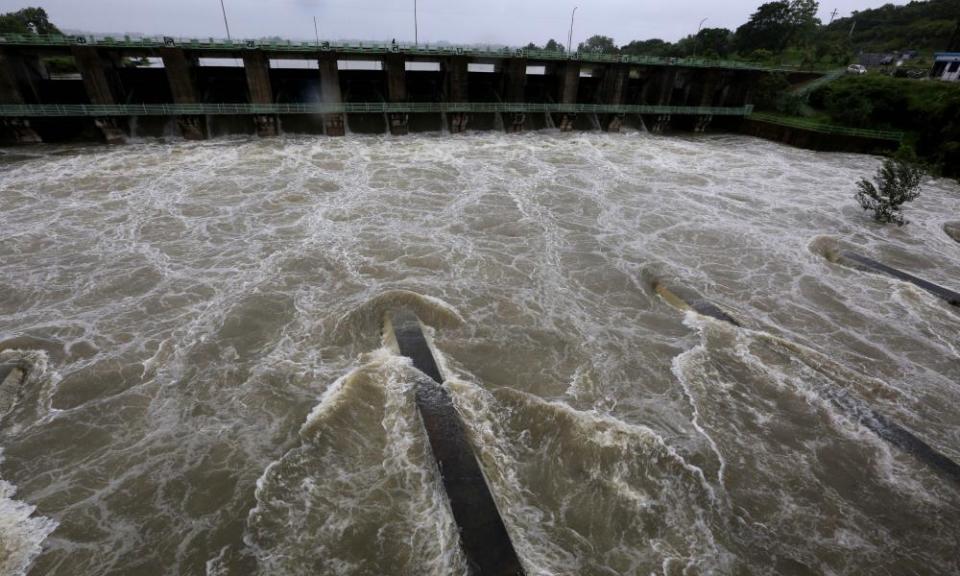UN warns most will live downstream of ageing large dams by 2050

By 2050 most people will live downstream of a large dam built in the 20th century, many of which are approaching the limits of the useful lifetime they were designed for, according to global research.
To avoid the potential for dam failures, overtopping or leaks, the dams will require increasing maintenance, and some may have to be taken out of service. Many governments have not prepared for these needs, warn the authors of a study by the United Nations University.
The volume of water stored behind large dams is estimated to be 7,000 to 8,300 cubic km, or enough to cover 80% of Canada’s landmass in a metre of water. Good maintenance can ensure a well-designed dam can last for 100 years without problem, but many of today’s large dams were built long before the risks of the climate crisis became clear.
Changing rainfall patterns and more extreme weather events have been putting dams under strains that were not envisaged by their designers, said Vladimir Smakhtin, director of the UNU’s Institute for Water, Environment and Health in Canada, and co-author of the study. “The rising frequency and severity of flooding and other extreme environmental events can overwhelm a dam’s design limits and accelerate a dam’s ageing process,” he said.
Dam failure risks the lives of people living downstream, and ageing dams should be investigated to assess the threat, but large-scale failures were likely to remain rare, the authors of the paper told the Guardian. A more likely threat is that even without major accidents, countries dependent on large dams as reservoirs and for hydroelectricity may face problems if the dams are not adequately maintained to cope with climatic changes.
“This is an emerging risk,” said Smakhtin. “There is no immediate catastrophe at a global level, but there are 60,000 large dams spread around the world, and they all are not getting any younger.”
The climate crisis meant large dams across the world should be reassessed, said Duminda Perera, a senior researcher at the institute and lead author of the study. “Big floods and rainfall changes may be beyond the capacity of these structures, and may cause a higher risk of collapse,” he said.
One common issue is that more intense rainfall can cause upstream erosion of water courses, and floods increase the debris and silt flowing into dams, causing a buildup of sediment.
Most of the world’s large dams are concentrated in a small number of countries – nine out of 10 are located within 25 countries. China has the most, with nearly 24,000 large dams, while many more are found in India, Japan and South Korea. Nearly half of the world’s river volume is already affected by dams, and most existing large dams were built between 1930 and 1970, with an expected life expectancy of 50 to 100 years.
There are about 16,000 large dams aged between 50 and 100 years in North America and Asia, and 2,300 that are more than 100 years old. As of last year, more than 85% of large dams in the US were operating at or beyond their life expectancy. The estimated cost of refurbishing them is about $64bn (£47bn), according to the report.
Where decommissioning is necessary, governments will face complex problems. Few large dams have been decommissioned to date, so there are few examples to learn from. “It’s difficult to say how many may need to be decommissioned,” said Perera. “It is very context-specific, depending on the age and condition – different dams age at a different pace.”

 Yahoo Finance
Yahoo Finance 